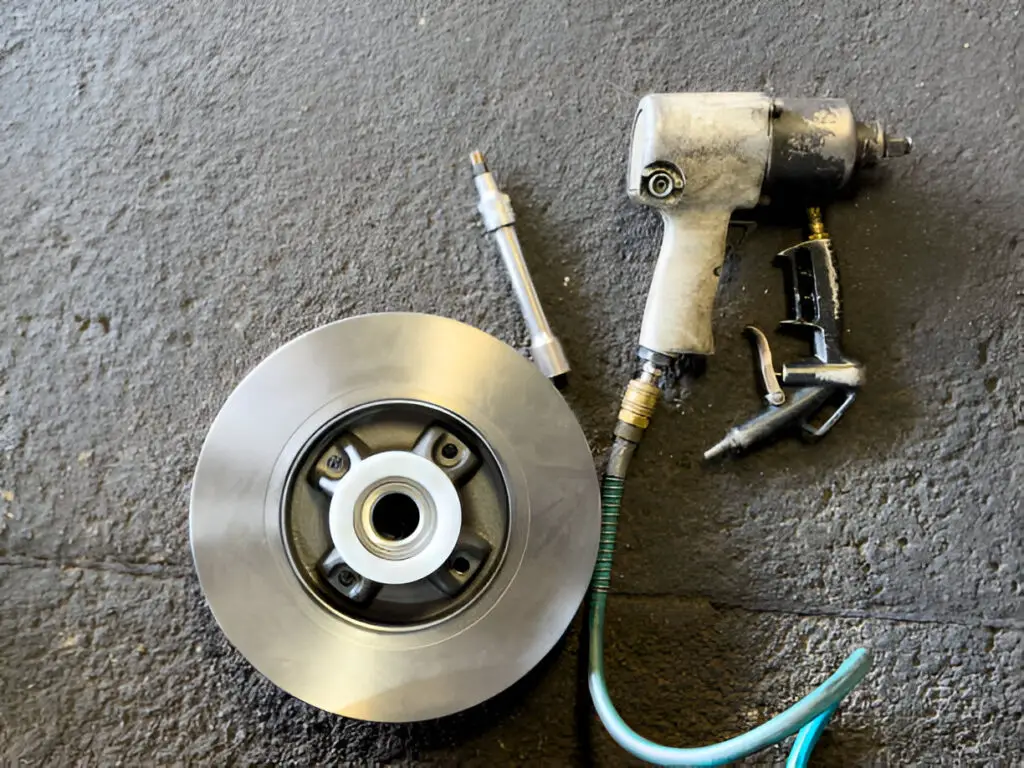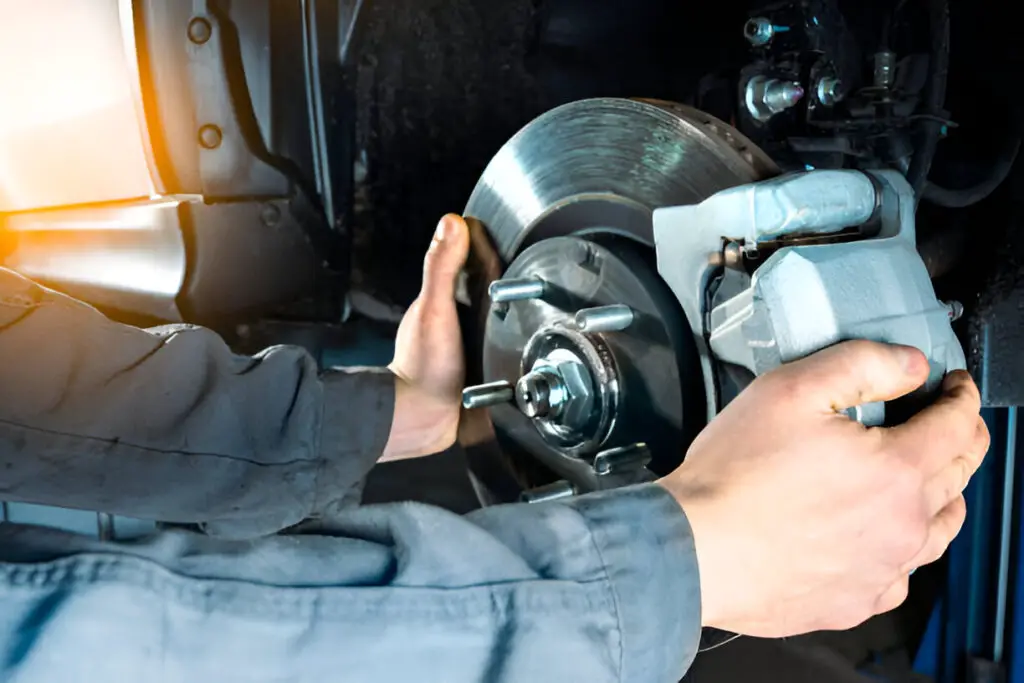Choose brake pads based on your driving habits and vehicle type. Ceramic pads are quiet and durable, semi-metallic are better for heavy-duty use, and organic pads are budget-friendly but wear faster. Always follow your vehicle’s manufacturer recommendations for the best performance.
When it comes to maintaining your vehicle, few components are as crucial as your brake system, particularly your brake pads. Brake pads play a vital role in ensuring your vehicle’s safety, and choosing the right type of pads is essential to optimize performance, durability, and cost-effectiveness.
Whether you’re a car enthusiast or a casual driver, understanding which brake pads are best for your car can seem overwhelming. In this article, we will break down the different types of brake pads, how to select the right one, and answer common questions that car owners have about brake pads.

Contents
Types of Brake Pads
There are four main types of brake pads, each with its advantages and disadvantages. Understanding the differences between these types can help you make an informed decision based on your driving habits and the type of vehicle you drive.
1. Ceramic Brake Pads
Material: Ceramic fibers, bonding agents, nonferrous filler materials, and small amounts of metal.
Performance: Ceramic brake pads are known for their durability and consistent performance under a wide range of temperatures. They produce less dust compared to other types and generate less noise.
Advantages:
- Long-lasting and durable.
- Quiet operation.
- Produce less brake dust, keeping wheels cleaner.
- Excellent performance in both low and high temperatures.
Disadvantages:
- More expensive than other types.
- Not ideal for high-performance or heavy-duty applications (e.g., towing, racing)
- Ceramic brake pads are well-suited for everyday driving in regular sedans and smaller cars, where noise reduction and low maintenance are priorities.
2. Semi-Metallic Brake Pads
Material: 30% to 65% metal content, including steel, copper, iron, and other composite alloys.
Performance: Semi-metallic brake pads are robust and versatile, making them ideal for a range of vehicles from sedans to trucks and SUVs. These pads perform well in high-performance settings.
Advantages:
- Excellent heat transfer, making them resistant to fading during heavy braking.
- Long-lasting and durable.
- Ideal for performance and heavier vehicles.
Disadvantages:
- Noisier than ceramic or organic brake pads.
- Produce more brake dust.
- Rougher on brake rotors, which may lead to faster wear.
These brake pads are a good choice for drivers who need reliable braking in extreme conditions, such as high speeds, towing, or driving in mountainous areas.
3. Organic (Non-Asbestos Organic, NAO) Brake Pads
Material: A mixture of fibers, including glass, rubber, Kevlar, and other organic compounds.
Performance: Organic brake pads provide smooth and quiet braking but tend to wear out more quickly than other types of pads. They are suitable for lighter vehicles and drivers who prioritize comfort over aggressive braking.
Advantages:
- Quieter and smoother braking experience.
- Environmentally friendly, with no harmful asbestos materials.
- Relatively inexpensive.
Disadvantages:
- Shorter lifespan compared to ceramic or semi-metallic pads.
- Less effective in extreme temperatures or under heavy braking conditions.
Organic brake pads are typically best suited for smaller cars and city driving, where braking intensity is moderate.
4. Low-Metallic NAO Brake Pads
Material: Organic material with added small amounts of metal (usually copper or steel).
Performance: These pads offer better braking performance than full organic pads, making them a good middle ground between organic and semi-metallic pads.
Advantages:
- Better stopping power than full organic pads.
- Decent durability.
- Affordable.
Disadvantages:
- Can be noisy.
- More brake dust than ceramic pads.
Low-metallic pads are often used in compact cars or mid-sized sedans and provide a balance between affordability and performance.
What Brake Pads Do I Need for My Car?
To choose the right brake pads for your car, consider these key factors:
1. Driving Habits and Conditions
The first factor to consider when choosing brake pads is how and where you drive. If you’re someone who drives primarily in urban environments, organic or ceramic brake pads might be sufficient, as you likely won’t be putting too much stress on your braking system. On the other hand, if you drive a truck or SUV, or if you tow heavy loads or drive in mountainous regions, semi-metallic pads may be a better choice.
2. Vehicle Type
The type of vehicle you drive significantly influences which brake pads are best suited for your needs. Smaller, lighter vehicles often perform well with organic or ceramic pads, while larger, heavier vehicles may require semi-metallic pads due to their superior heat dissipation and durability.
3. Performance Requirements
Do you need high-performance braking for racing or spirited driving? Or are you more concerned with comfort and low noise? For high-performance applications, semi-metallic pads are the best option, while ceramic or organic pads may be more appropriate for daily driving in standard conditions.
4. Budget Considerations
Ceramic pads tend to be more expensive than organic or semi-metallic options. However, they are also more durable, which can save money in the long run due to less frequent replacements. Be sure to factor in both the initial cost and long-term durability when deciding which brake pads to purchase.
5. Environmental Considerations
Some brake pad materials, such as low-metallic and semi-metallic pads, generate more dust, which can be harmful to both the environment and your vehicle’s wheels. Ceramic pads, known for producing less brake dust, may be a more eco-friendly option if that’s a concern.

Frequently Asked Questions
Here are some FAQs about brake pads –
1. How long do brake pads typically last?
Brake pads generally last between 30,000 to 70,000 miles, depending on the type of pads, driving conditions, and driving habits.
2. Can I mix different types of brake pads on my car?
It’s generally not recommended to mix different types of brake pads on your vehicle. It’s best to use the same type of pad on all four wheels for balanced braking performance.
3. Are ceramic brake pads better than semi-metallic pads?
Ceramic brake pads are quieter and produce less dust than semi-metallic pads, but semi-metallic pads offer better performance in extreme conditions, such as towing or racing.
4. How do I know when it’s time to replace my brake pads?
Common signs that it’s time to replace brake pads include squealing sounds, grinding noises, longer stopping distances, and visible wear on the pads.
5. How much does it cost to replace brake pads?
The cost of brake pad replacement varies widely, depending on the type of pads and whether you do it yourself or have a mechanic perform the work. On average, you can expect to pay between $150 and $300 per axle for professional replacement, while DIY costs can be lower depending on the pads you purchase.
Conclusion
Choosing the right brake pads for your car involves understanding your driving needs, vehicle type, and the specific benefits of different materials. Whether you opt for ceramic, semi-metallic, or organic brake pads, selecting the right pads will ensure a safer and more enjoyable driving experience. Be sure to replace worn-out pads promptly to avoid more extensive and expensive brake repairs down the road.